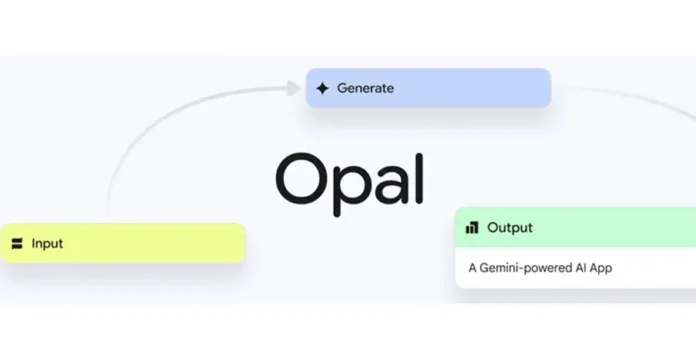
In a major step towards making software development more accessible, Google has introduced Opal, a new AI-powered tool that enables users to build simple web apps using natural language prompts. Currently available in the U.S. via Google Labs, Opal is Google’s latest experiment in the fast-growing “vibe-coding” trend—tools designed to let users prototype applications with minimal or no traditional coding.
Opal allows users to describe the kind of app they want to build in plain text. Google’s underlying AI models interpret the prompt and generate a functional mini web app. What sets Opal apart is its intuitive visual editor, where users can explore the app’s workflow—tracking inputs, outputs, and each generation step—offering transparency into how the app was created.
Users can also refine their app by editing prompts directly within the workflow or adding new steps via a toolbar. Once satisfied with the result, users can publish their apps online and share them through links accessible via Google accounts. This functionality makes Opal a powerful tool not just for experienced developers, but also for beginners or non-technical users curious about building apps. A gallery feature further encourages experimentation, letting users remix existing apps for their own purposes.
By entering the vibe-coding space, Google joins a wave of platforms like Canva, Figma, and Replit that focus on simplifying software creation through AI. These tools aim to eliminate the steep learning curve of traditional programming by emphasizing visual, prompt-based development. “The visual workflow of Opal suggests Google’s intention to make app development more accessible to a broader audience.”
While Google already supports app generation via text prompts through its AI Studio, Opal’s visual interface brings a more hands-on and user-friendly experience. This shift could expand app development to include users who previously found coding too complex or intimidating. As Google refines Opal, its broader goal is clear: to lower the barrier to entry in tech and empower a more diverse range of users to build digital tools.
“The vibe-coding phenomenon has attracted considerable interest from startups and investors,” and Google’s Opal is now positioned as a serious player in this growing market. As the tool continues to evolve, it could reshape how everyday users interact with and create software.





